Hydrangea Not Blooming? Here’s What to Do
Updated: Jul. 22, 2024
A hydrangea not blooming can be a frustrating issue for gardeners who adore its beautiful flowers. Here's how to solve the problem.
On This Page
Oakleaf Hydrangea Growing But Not Blooming
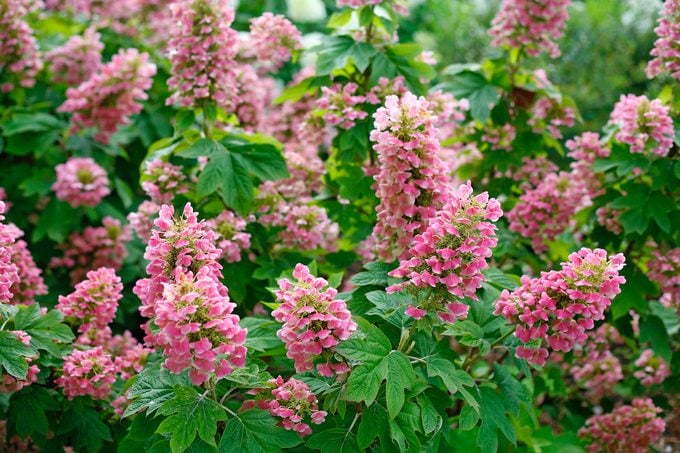
“I have a 7-year-old oakleaf hydrangea in a shaded location. It grows a lot of healthy foliage that I have to prune regularly, but my hydrangea is not blooming. It bloomed only once or twice. Why do you think that is?” asks William Stovall.
It’s all about the timing when pruning this and other hydrangeas. Oakleaf hydrangeas produce flower buds the year before they bloom. Keep pruning to a minimum to maximize the floral display. Remove only the damaged and wayward branches each year as needed. This helps control the plant’s size while encouraging it to bloom. Heavy pruning stimulates growth and results in a larger plant that needs additional pruning. Selective pruning leaves you with more stems with intact flower buds for a better bloom the following year.
Prune Like a Pro: Study the shape of the plant before making any cuts and make sure you always use clean, sharp tools. Avoid overpruning by cutting only a fourth to a third of the canopy per year.
Check out hydrangea facts that even expert gardeners don’t know.
Bigleaf Hydrangea Not Blooming
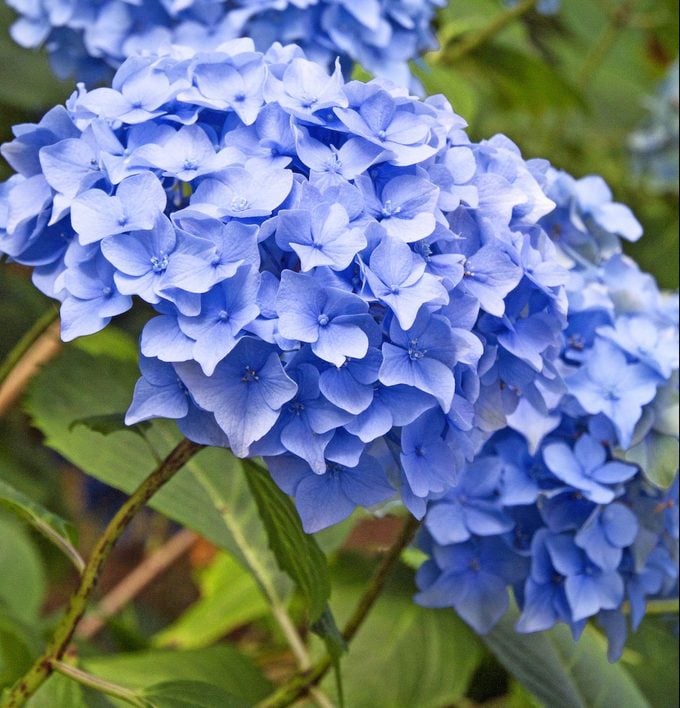
“My hydrangea hasn’t bloomed in 15 years. It always has beautiful green leaves but no flowers. I use a special fertilizer and even moved it after someone told me hydrangeas don’t like to be under oaks and mine was under one. What can I do to get it to bloom?” asks Kim Cerone of Niskayuna, New York.
Bigleaf hydrangeas (Hydrangea macrophylla) typically set their flower buds the summer before they bloom. In northern areas like yours, the plant usually dies back to the ground, killing the stems that contain the flower buds, but the roots survive. The result is a plant with lots of leaves and no flowers. Repeat-blooming bigleaf hydrangeas were bred to flower on old and new growth. If the plant dies back to the ground over winter, it should flower on the current season’s growth.
The repeat-blooming varieties gained a lot of popularity with the introduction of Endless Summer back in 2004. Since then, many more repeat-blooming varieties have been introduced. Most benefit from a spring application of fertilizer, moist but not soggy soil and full sun in the morning with dappled shade in the afternoon. I found applying Milorganite fertilizer to the soil surrounding repeat-blooming hydrangeas in the spring has helped improve flowering. Research found that when the microorganisms released the nutrients from the fertilizer pellets, they also made some of the soil-bound phosphorous and potassium available to the plants. This phosphorous, along with the non-leaching phosphorous in Milorganite, helps promote flowering.
Make sure you know these essential tips about caring for hydrangeas.
Climbing Hydrangea Not Blooming
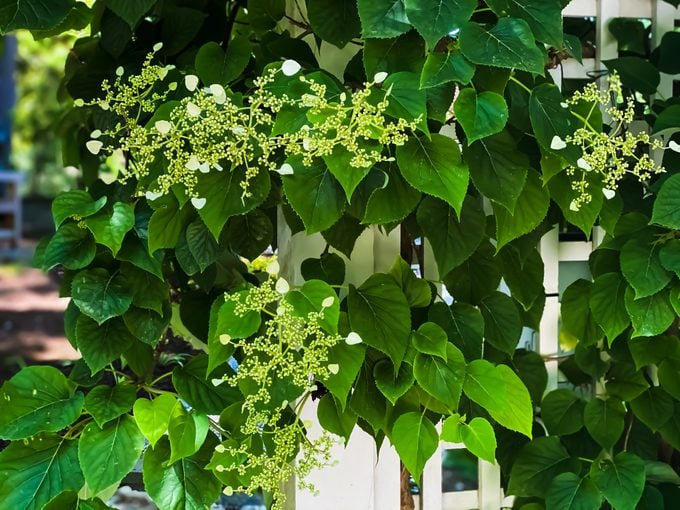
“My 6-year-old climbing hydrangea has never bloomed. It’s 15 feet tall and spread out over a trellis. How can I encourage blooming?” asks Alyssa Kadyk.
You’re definitely not alone. A hydrangea not blooming is a common issue among gardeners who grow climbing hydrangeas. As you discovered, these plants take a long time to establish and start flowering. Avoid high-nitrogen, fast-release fertilizers that encourage leaf and stem growth but discourage flowering.
Water plants thoroughly as needed and use a low-nitrogen, slow-release fertilizer if you feel your plants need a boost. Beautiful blooms will grow as a reward for your patience.
Looking for a new hydrangea color to add to your garden? Try the ‘Wee Bit Giddy’ hydrangea.
Protect Hydrangeas in Winter
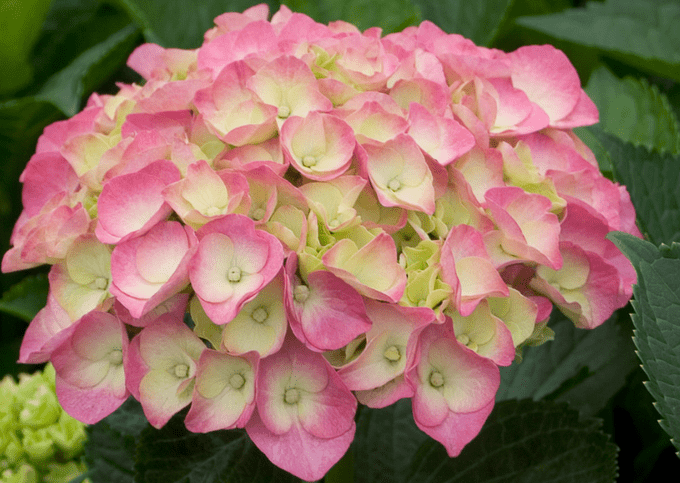
“My hydrangeas are about 15 years old and have bloomed only once. I feed them and mulch them with pine needles and leaves in the winter. What am I doing wrong?” asks Loretta McClincy.
Most bigleaf hydrangeas (Hydrangea macrophylla), those with pink or blue flowers, produce blooms only on the previous season’s growth. They are also known as mophead hydrangeas. Flowers bloom pink in alkaline soil and blue in acidic soil. (Learn how to change the color of hydrangeas.)
If they die back to the ground or are pruned to the ground in late winter, they will not flower. In your climate, you need to protect the future flowering stems from the cold.
Try encircling the plant with 4-foot-tall hardware cloth. Sink it several inches into the ground to keep out rabbits and voles, then fill with weed-free straw or evergreen boughs to insulate the plant. Wrapping the fencing with burlap or weed barrier will add another layer of insulation.
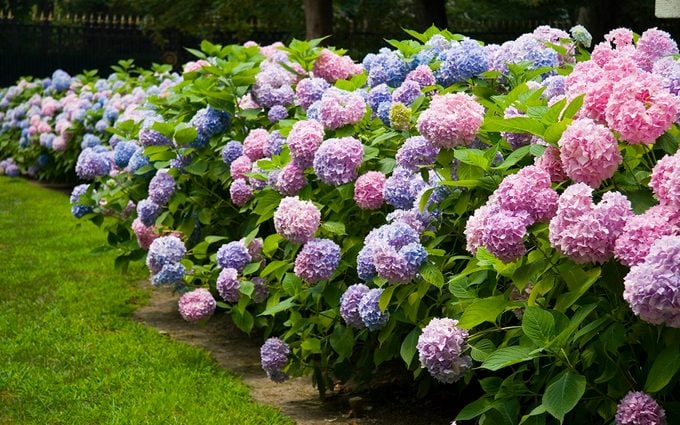
You might also consider putting evergreen boughs or weed-free straw over the plants after the ground freezes. These mulches provide better insulation than leaves. In spring, remove the mulch and wait to see if there’s any growth on the stems. This is the growth that will flower. You should prune off only the dead portions of the stems.
If you’re growing one of the repeat-blooming bigleaf hydrangeas, like the Endless Summer collection, make sure the soil is moist and fertilize with a low-nitrogen organic fertilizer once in spring. These varieties are supposed to flower on old and new growth with proper care.
Many Northern gardeners have switched to hardier panicle hydrangeas, whose flowers start out white and fade to pink. Moisture and proper fertilization are the keys to success with these.
Discover more breathtaking types of hydrangeas.




















